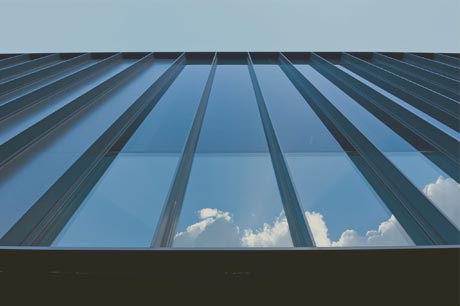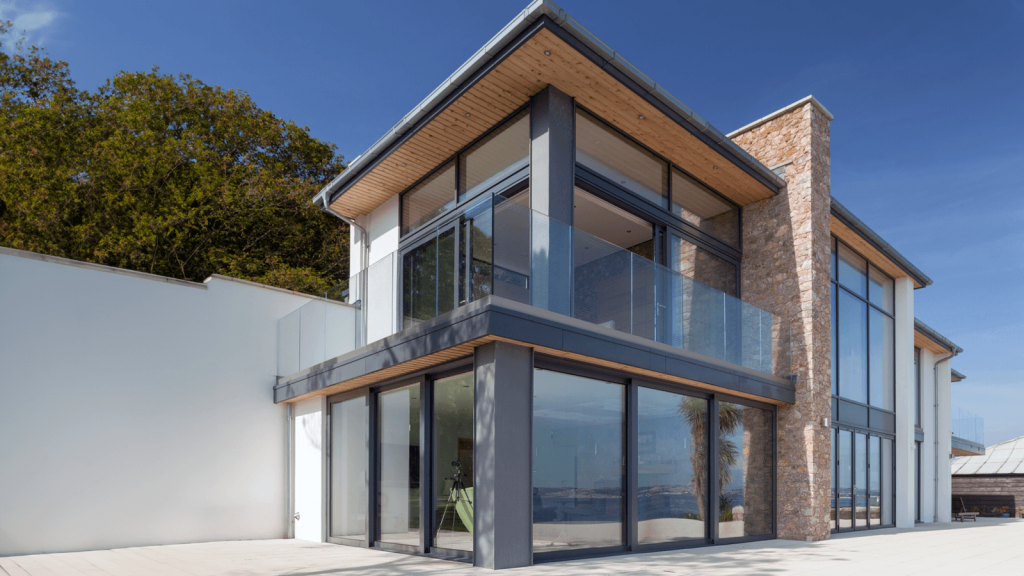
Modern architectural design demands innovative solutions that combine aesthetics with performance, and curtain walling stands at the forefront of this evolution. As Lancashire’s construction sector continues to grow, understanding the capabilities and applications of advanced curtain walling systems becomes increasingly important for trade professionals.
Understanding Curtain Walling Systems
Curtain walling is a non-structural outer building envelope that typically spans multiple floors. Unlike traditional walls, curtain walling systems transfer their dead loads, and wind loads to the main building structure through anchors at floor level.
Key Components and Materials
Modern curtain walling solutions incorporate several essential elements. These include:
- Aluminium frames – Providing structural stability while remaining lightweight
- High performance glazing – Offering thermal and acoustic insulation
- Thermal breaks – Preventing heat transfer between interior and exterior
- Gaskets and sealants – Ensuring weathertight construction
Benefits of Curtain Walling for Commercial Applications

For Lancashire’s commercial sector, curtain walling delivers multiple advantages.
Energy Efficiency Solutions
Modern curtain walling systems achieve exceptional thermal performance through:
- Double and triple glazing options
- Thermally broken profiles
Design Flexibility
Trade professionals can offer clients versatile design options including:
- Varied panel configurations
- Integration with other building elements
Residential Applications and Innovations

The residential sector is increasingly adopting curtain walling solutions. Some areas where residential curtain walling is particularly popular include:
- High end residential developments
- Contemporary home extensions
- Multi-occupancy buildings
Curtain Walling Installation Best Practices
Successful curtain wall installation requires specialist product knowledge. For trade installers working on curtain walling projects, it’s important to consider the following points:
- Precise structural calculations
- Careful consideration of building movement
- Professional weather sealing
- Regular quality checks throughout installation
At Great Harwood Windows, we can offer professional advice for all trade customers involved in commercial and residential curtain walling projects.
Regulatory Compliance and Standards
All curtain walling installations must meet current building regulations standards. Important points to check include:
- Document L thermal requirements
- BS EN 13830:2003 performance standards
- Safety glazing regulations
Curtain Walling Maintenance and Longevity
To ensure optimal performance of curtain walling systems, the following tasks should be completed:
- Regular inspections of seals and gaskets
- Cleaning of drainage channels
- Checking of fixing points
- Annual professional maintenance
Curtain walling continues to evolve with new technologies and materials enhancing performance and sustainability. For Lancashire’s trade professionals, staying informed about these developments is essential for delivering cutting edge solutions to clients.
If you’d like to find out more contact Great Harwood Windows to discuss your curtain walling requirements and discover how our expertise can support your next project. You can call us on 01254 690 009 or email info@greatharwoodwindows.co.uk.
Frequently Asked Question
How do aluminium curtain wall systems compare to other materials in terms of performance?
Aluminium curtain wall systems offer superior durability, lightweight properties, and excellent thermal performance compared to materials like steel or glass. They provide better resistance to weathering and are less prone to corrosion, making them a popular choice for modern buildings.
What is the difference between stick and unitised curtain walling solutions?
Stick curtain walling involves the assembly of individual components on-site, allowing for flexibility and easier repairs. In contrast, unitised curtain walling consists of pre-fabricated panels that are manufactured off-site and then installed as complete units, resulting in quicker installation times and reduced on-site labor.
What factors should I consider when choosing a curtain walling system for my project?
When choosing a curtain walling system for your project, consider the following factors: the building’s architectural design, the local climate and weather conditions, energy efficiency requirements, structural integrity, material durability, maintenance needs, aesthetic preferences, and budget constraints. Additionally, ensure that the system complies with local building codes and regulations, and evaluate the installation process and timeline.














